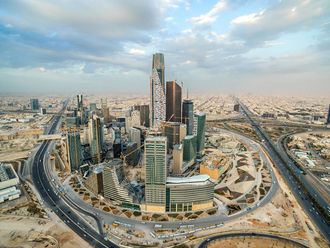Islamabad: A marginal fall recently in the exchange rate of the Pakistani rupee has prompted fresh anxieties over the long-term outlook of the country's currency. But most analysts would advise calm rather than caution, though renewing advice for investors to diversify their portfolios as far as possible.
The rupee has remained relatively stable in the past five years, as Pakistan has successfully returned from its status as a near default country to a solvent one for now.
In sharp contrast to the 1990s when Pakistan routinely received warnings from analysts over a possible first ever default on its foreign debt repayments, it has returned to the relative comfort of being solvent.
Across Pakistan's financial and equity markets, most investors seldom take account of a falling exchange rate of the rupee as a significant impediment to their investment choices.
Indeed, many take the view that the slide in the rupee's exchange rate is hardly a consideration for them.
The future of the rupee is certain to be of central interest to players in the Pakistani markets, given that the currency's exchange rate is often central to their returns. In the long run, there's cause for anxiety but the short term outlook may be more settling.
For the moment, concerns over a sharp devaluation of the rupee may well be exaggerated. While countries around the world are generally under mounting economic pressures due to rising interest rates, high oil prices and the resultant inflation, Pakistan's economic planners are hardly alarmed for now.
Even rising interest rates of the past year driven by the decision of Pakistan's central bank to raise its own discount rate and warnings over rising inflation have failed to dampen the official optimism.
But Pakistan suffers from three inter-related dangers to its economic outlook with implications for its exchange rate.
First, the country's rising trade deficit must eventually dent its economic outlook. Contrary to a sense of calm advised by some official economic planners who see a sharply rising trade deficit as evidence of rising imports driven by growing industrial production, there are adequate reasons to be anxious.
A sharp rising import bill must eventually force Pakistan to consider ways of raising its exports to begin reducing the trade gap. Devaluing the rupee at some point may therefore become an attractive policy option, though one with consequences such as a further rise in inflation.
Second, the level of inflation across Pakistan may not necessarily be just linked to economic factors related directly to the exchange rate.
That's largely because Pakistan's administrative systems remain weak and the government's capacity to enforce price controls is indeed inadequate. It is therefore not unprecedented to remember times when a certain increase in global oil prices has had a much larger knock on effect on the ground.
Finally, a rising trade deficit along with inflation must then be followed by a close assessment of the inefficiencies within Pakistan's business and industrial structures. The country's production costs are often pushed upwards by factors such as fast rising electricity tariff. Other impediments include a fundamentally dysfunctional tax collection system where far too few just one per cent of the population of 160 million pay an income tax.
Ultimately, the rise or fall of the rupee is set to be a significant factor for the markets even though Pakistan's economic planners are set to claim continued success for the country's economic recovery, even as there are warnings of a possible global economic slowdown.
The writer is a journalist based in Pakistan.












